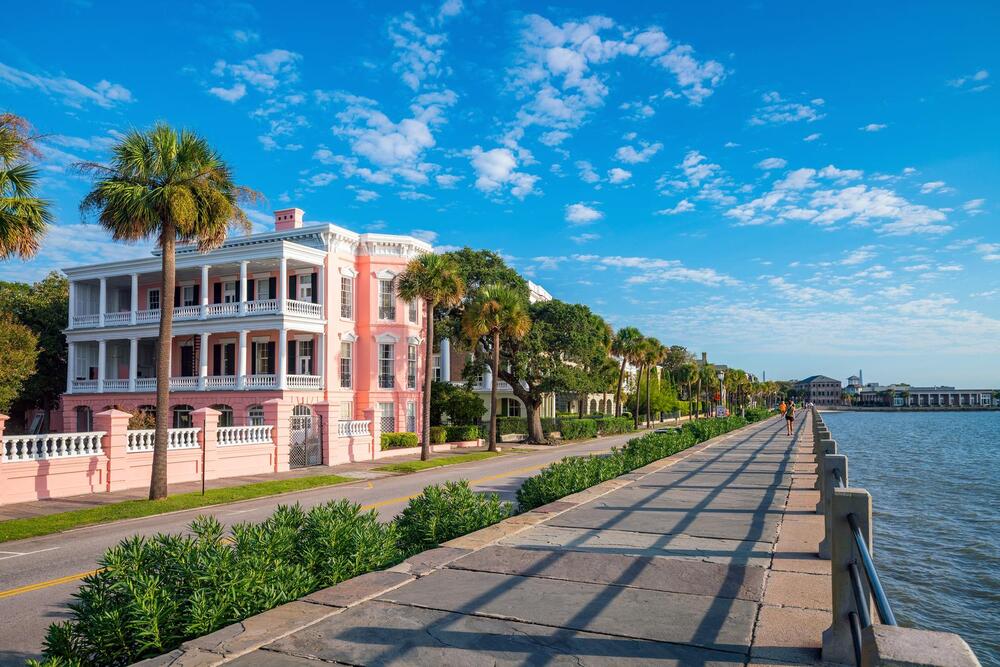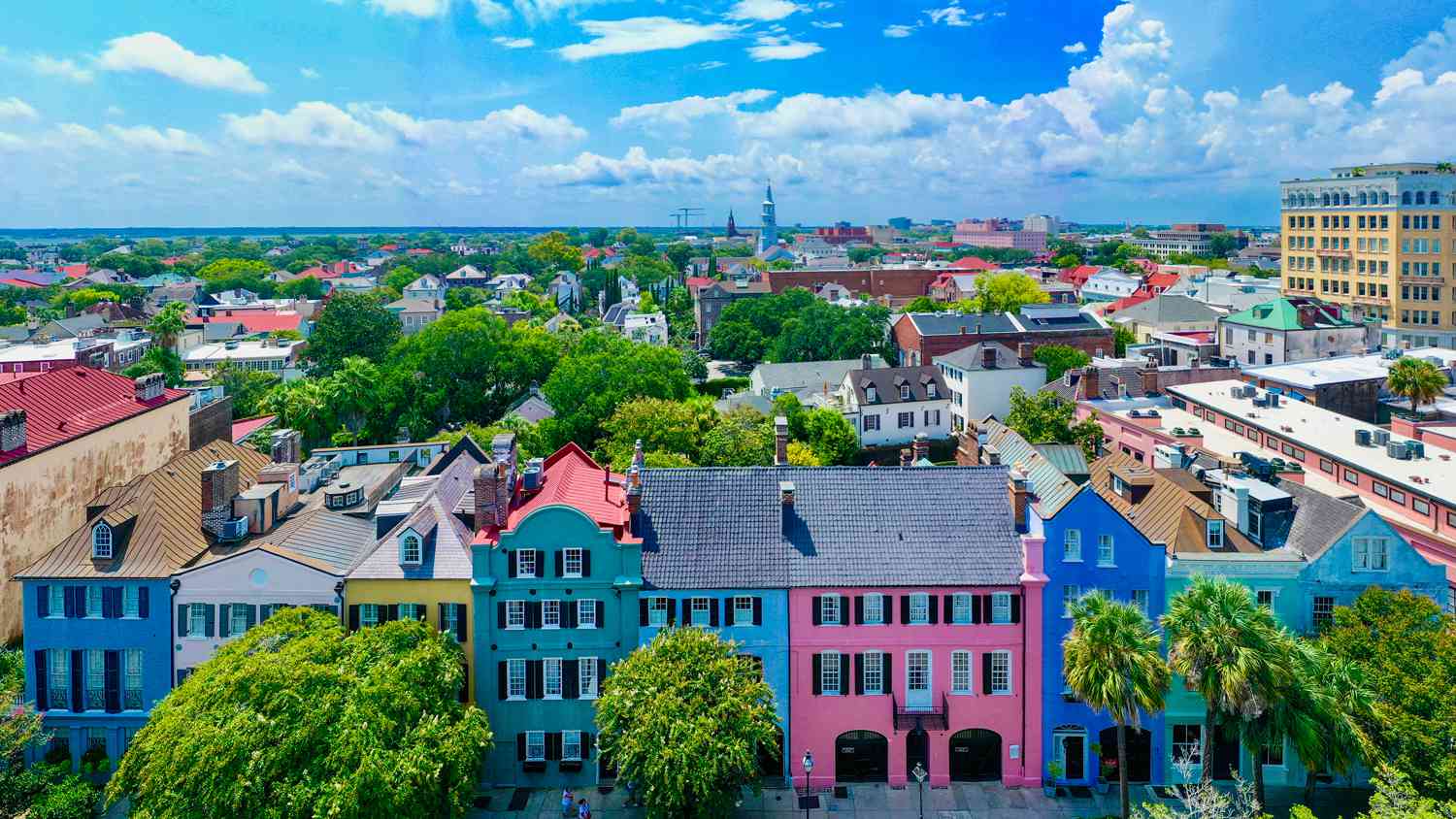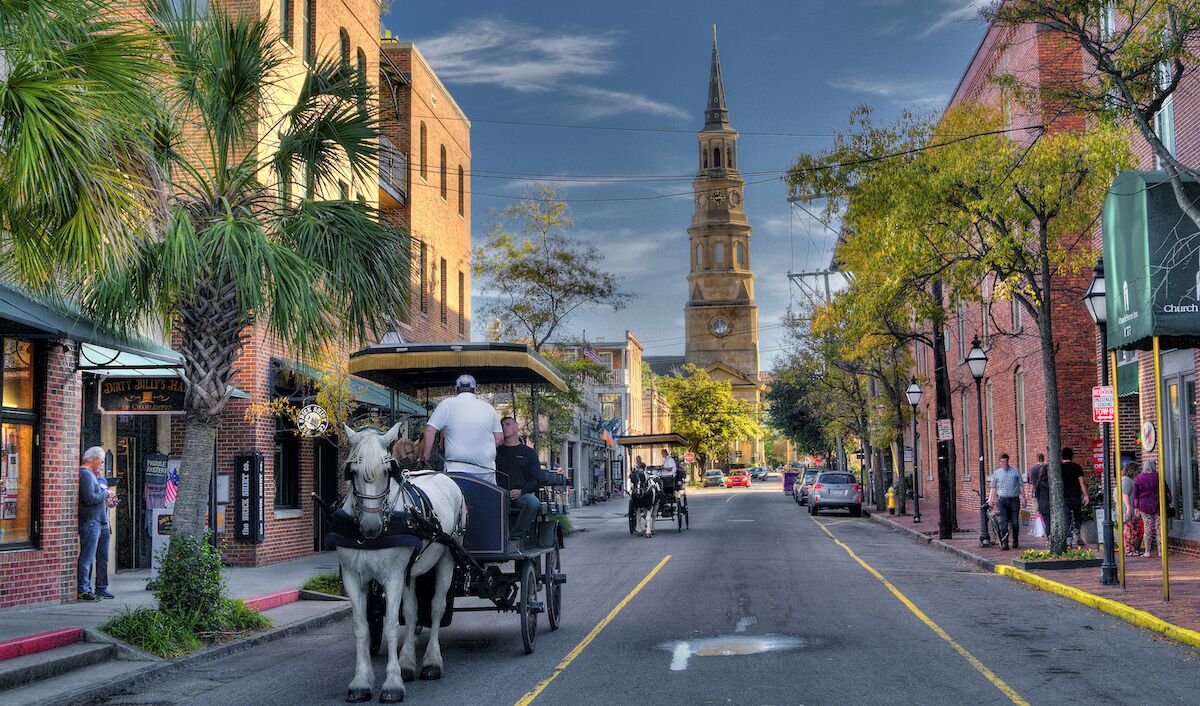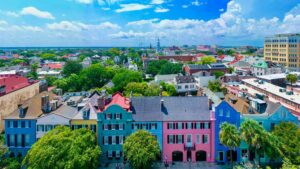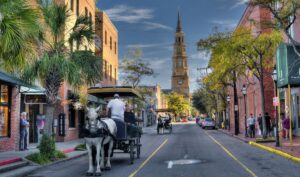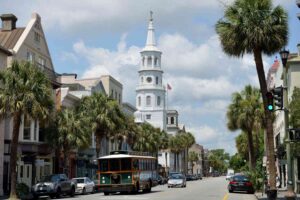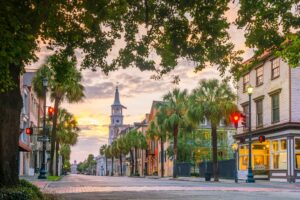The Confederate Battle Flag at the Confederate Monument in Columbia has
been a source of contention since its first placement atop the State House dome
in 1962. Perhaps a little history on the flag itself
is in order.
Carolina have created the impetus to remove the flag once and
finally from the State House Grounds It is ironic that that this flag was the design of a Charlestonian who
worked just three blocks away from Mother Emanuel Church. William Porcher Miles (July 4, 1822 – May 11, 1899) was a tenured Professor of Mathematics at the College of
Charleston from 1843 to 1855. An ardent States
Rights advocate and supporter of
slavery, he is numbered among the notorious
Southern Secessionists who came to be known as the “Fire Eaters”, who
considered any northern efforts to
restrict slavery as justification for secession. Elected as mayor of
Charleston in 1855 and then serving in the United States House of Representatives
from 1857 until South Carolina seceded in December 1860, Miles went on to represent his state in the Confederate House of Representatives
As a member of the Confederate Congress, he chaired the
Badges and Flag Committee which was tasked with creating a national flag for the
Confederate States. The battle flag was rejected as the national flag in
1861.Instead, General Robert E. Lee adopted it as the battle flag for his Army of
Northern Virginia.
of bravery, sacrifice and defense of hearth and home. It symbolizes the
ultimate sacrifice of those who died for Southern Independence in the War
Between the States. For many, this flag is
a great symbol of heritage and solemn remembrance. The graves of those who died
in the War for Southern Independence are even today decorated with this flag. But for others, it is a dark symbol. It symbolizes the rise of the Ku Klux Klan. It represents racial hatred and terrorism.
sad day for the 28,000 strong Army of
Northern Virginia. It was the day that marked the end of the long struggle by
southern states for independence. General Robert E. Lee surrendered his army to
General Grant at Appomattox. Grant’s terms were generous, allowing the men to
go home and carry their personal property. Officers were even allowed to keep
their swords. Grant wanted to strike a tone of reconciliation. As the surrender
was announced, his men commenced firing a salute of a hundred guns in honor of
the victory.
once sent word, however, to have it stopped. The Confederates were now our
prisoners, and we did not want to exult over their downfall. “
his vanquished troops. Among his final orders he declared:,
banner, never to unfurl it again”
national reconciliation. The leader of a Confederate army earned respect and admiration
both north and south. Because Robert E Lee was such a great man, and because he set the tone for reconciliation after the War, he was lionized, and rightly so, by vanquished southerners. He aimed to set the tone for healing the wounds of a war
torn nation. Shortly after the War he became president of Washington College,
later Washington and Lee University. The day he was sworn in as college President,
he took an oath to “henceforth” support the U.S. Constitution, his
recommendation to all former Confederates. At his funeral in 1870, no flags of
the Confederacy were displayed.. Lee did not want such divisive symbols
following him to the grave. Former Confederate soldiers marching did not don
their old military uniforms, and neither did the body they buried. The flag was
folded up and put away, making occasional appearances at funerals and later,
Veteran’s reunions.
with the KKK., but it is inaccurate to claim the KKK took it up during
Reconstruction. There is little evidence that the 19th century Klan ever took it up. Founded in 1866 by ex-Confederate soldiers and
other Southerners opposed to Reconstruction, the Klan was primarily a white
terrorist organization that carried out hundreds of murders. The Klan waned and
disbanded with the firm establishment of
Jim Crow by the 1890s .
The desecration of the Flag of the Army of Northern Virginia started with the release of D. W. Griffith’s film The Birth of A Nation in 1915. The film portrayed the Klansmen as great heroes, and
Griffith appropriated the Confederate banner for the movie.. This movie was
sensational for cinematic excellence, and is even today numbered among the
greatest examples of cinematic skill. But it was also sensational for its dark
content. The Birth of a Nation played
to the deepest and darkest fears of the white population presenting a warped
history of Reconstruction. with the KKK
as heroes and Southern blacks as villains and violent rapists and threats to
the social order. It held great appeal to white Americans who subscribed to the mythic,
romantic view (similar to Sir Walter Scott historical romances) of the Old
Plantation South. The Klan was portrayed
as the South’s savior from Black tyranny. And these heroes, clad in white robes
and pointy white hats. saved the day leading with — you guessed it—Robert
E. Lee’s battle flag. Promotional posters for Birth of A Nation featured the
flag, reviving this Confederate symbol as a respectable symbol of White
Supremacy.
“It is like writing history with lightning, and my only regret is that it
is all so terribly true.” African-American audiences were horrified and
wept in their seats, while white audiences cheered. A frenzy of racial hatred swept the nation as white mobs roamed city streets attacking blacks. there were riots in Boston and Philadelphia. In Lafayette, Indiana, a white man killed a black teenager
after seeing the movie. Consequently, it was denied release in many other
places (Chicago, Ohio, Denver, Pittsburgh, St. Louis, and Minneapolis). The Confederate Flag became the symbol of White
Supremacy.
The film inspired “Colonel” William Joseph Simmons to revive the
Klan. Setting a cross on fire atop a mountain was his first official to mark the rebirth of the Klan.
The resurrected Klan targeted blacks, Jews and Catholics with its message of
hate. The Klan promoted fundamentalism and devout patriotism along with
advocating white
supremacy. They blasted bootleggers, motion pictures and espoused a return
to “clean” living. Appealing to folks uncomfortable with the shifting
nature of America from a rural agricultural society to an urban industrial
one, the Klan attacked the elite, urbanites and intellectuals.
ballooned in the 1920s. By the middle of the decade, estimates for national
membership in this secret organization ranged from three million to as high as
eight million Klansmen. The Confederate Battle Flag became a national symbol
for a powerful national organization. In the 1920s, the Klan moved in many
states to dominate local and state politics. Known as the “Invisible
Empire,” the KKK’s presence was felt across the country.
In 1925 Klan
leader David C. Stephenson, was convicted for second-degree
murder. Charges of corruption by other
members such as the governor of Indiana and the mayor of Indianapolis brought
on a steep decline in membership. By 1944 the national organization was
disbanded. Nonetheless, across the nation, pockets persisted that terrorized
blacks in the countryside. Lynchings and house burnings were not uncommon. The
symbols present at these horrific events were burning crosses and the
Confederate Flag. These events etched the flag in the minds of many Blacks as a
symbol of domestic terrorism.
Confederate Flag came in 1948 when President Harry Truman’s Committee on Civil
Rights ordered an immediate desegregation of the Armed Forces. This created a
shudder of horror in the Deep South, and the backlash resulted in the formation
of the States Rights Democratic Party, popularly called “Dixiecrats”. Their
nominee for President was Governor Strom Thurmond of South Carolina. Here is
the Party Platform:
integrity of each race; the constitutional right to choose one’s associates; to
accept private employment without governmental interference, and to earn one’s
living in any lawful way. We oppose the elimination of segregation, the repeal
of miscegenation statutes, the control of private employment by Federal
bureaucrats called for by the misnamed civil rights program. We favor
home-rule, local self-government and a minimum interference with individual
rights.”
as the proud banner of segregation. Desegregation in schools and
universities, coupled with the rise of the Civil Rights Movement, prompted
leadership in the Deep South to raise the Confederate Flag above their state
houses. Many incorporated it into the design of their state flags. It rose
above the State House in Columbia in 1961 to supposedly commemorate the
Centennial of the Battle of Fort Sumter. But it was also a statement that South
Carolina would never bow to desegregation.
General Robert E Lee’s sadly misappropriated
flag was removed from the flagstaff atop the Capitol in 2000 and was placed at the Confederate Monument on the
State House Grounds. But now, the flag has come down from the State House Grounds. A symbol of
heritage to some, a symbol of terrorism to others. The young man that killed
the nine martyrs at Mother Emanuel AME Church in June wrapped himself in that
flag, and so now the flag has been furled, never to fly again. At least not on the State House grounds.
General Robert E Lee would be pleased.
l


